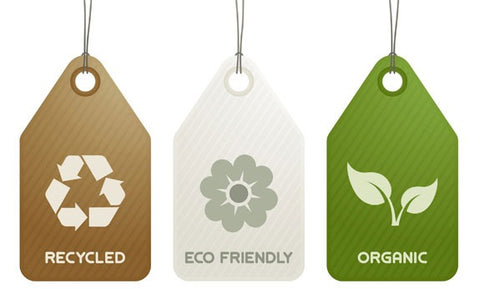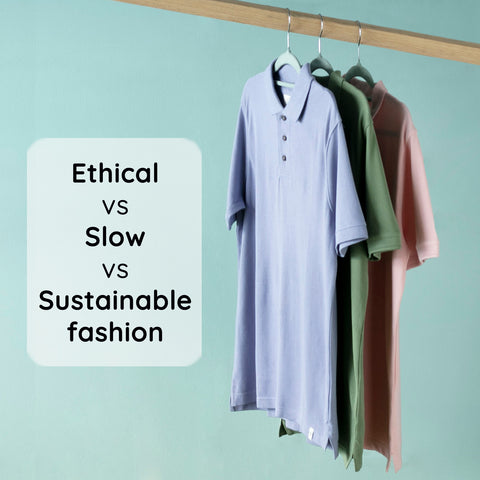The world is moving towards making conscious choices for the environment, and words like fast fashion and slow fashion have never been more prevalent. Fast fashion vs slow fashion has been at the forefront of various conversations. But do we have enough clarity on what fast fashion means? The repercussions on the environment, or what the cost of fast fashion truly is? Let’s find out together.
Tackling Fast Fashion
What is Fast Fashion
The world moves quickly, and fashion is one of the biggest indicators of how fast-paced our lives are. Fashion is constantly changing and evolving, and several corporations have found a way to keep up with these trends. Fast fashion moves quickly and emulates catwalk trends and designs that are in vogue and selling a lot. Fashion trends that are dictated by celebrities, designers, and what the consumer wears, have a way of shifting quickly. So to meet the demand caused by these factors, fast fashion outlets make cheaper alternatives to trendy clothing.
However, make no mistake, fast fashion is lower-quality, cheaply made, and mass-produced. This is one of the biggest arguments to make when having the fast fashion vs slow fashion argument. The tonnes of waste produced by the industry fill landfills, and this clothing is responsible for a large chunk of the environmental crisis.
How fast fashion production works
Production-wise, the practices of the fast fashion industry are heavily criticized. To meet the constant demand of the masses, a lot is produced in a very short amount of time. The amount of production is bound to create issues especially when it comes to the environment or the workers who are responsible for the production of these clothes. Additionally, due to the trends switching constantly, there has been a massive increase in collections that are rolled out in a year. To put it in perspective, worldwide textile production has increased two-fold from just 2000 to 2014. With the scale of production, environmental concerns are also magnified.
Chemical fibers, massive waste production, and ineffective factory methods are just some of the ways fast fashion fuels the environmental crisis per year. Chemical fibers are made from crude oil, which in turn leads to a very high amount of CO2 production. Also, did you know that even washing these clothes can have further ramifications on the environment? Yes, fast fashion clothes have microfibers, which when washed are released into the ocean in huge quantities. The CO2 emissions per annum are as high as 1715 tonnes.
Water consumption in fast fashion has been one of the biggest drawbacks. Per annum, nearly 79 Billion cubic meters of water is consumed by the fast fashion industry, making it the 2nd largest consumer of water in the world. This is set to accelerate by 40% in 2030.
The high demand for fast fashion clothes has also led to massive human rights violations in how workers and factory members are treated. The industry is worth $2.4 trillion, and it predominantly employs women, who end up being subjected to a myriad of labor practice abuses. These issues range from denied maternity leaves to underpaid work for excessive hours.
Several cost-cutting techniques are involved in the mass production of fast fashion. Due to the subjugation to toxic fumes, bad lighting, and operation of heavy-duty machinery; issues such as bad eyesight, lung disease, and injuries are frequent in this industry.
How Slow Fashion serves as a solution to Fast Fashion
What is slow fashion?
Kate Fletcher coined the term Slow Fashion after she was inspired by the slow food movement. The characteristic feature of the slow fashion movement is that it isn’t mass produced. The raw material is often sourced from local areas, they’re crafted with an eye for detail, and the quality checking of each piece is stringent and thorough. It has been at the forefront of the sustainability movement all over the globe.
Slow fashion has been described as the ethical way to connect raw materials, labor, and the Earth. Slow fashion attaches a holistic perspective to the production process. Often, the fibers that are used in these clothes are biodegradable and don’t contribute to the pollution of water bodies. Slow fashion places a huge emphasis on recycling and conservation, so the water used in production is reused and the color isn’t dumped into the water to create additional waste.
Due to rising awareness amongst consumers, slow fashion is making its way into people’s consciousness. A huge contributor to this is climate change. The value of sustainable clothing is seen in the high-quality output that is produced. These clothes do not lose shape or color after multiple uses. This leads to a slow down in the break down-consumption cycle which leads to lesser waste and better consumer practices.
Slow fashion clothes have a slightly higher price tag, but the overall cost, in the long run, is reduced because the clothes are made to be durable and last a long time.
Not only does slow fashion reduce CO2 emissions, but it also saves a large quantity of freshwater. In fast fashion, waste and dyes are dumped into freshwater which pollutes it and makes it unconsumable. However, in slow fashion, the recycling of the water leads to better practices and more water for all!
We hope that this blog has helped you make the right decision when making your next clothing purchase. You have the power to protect the internet, and it all starts with your wardrobe.






